- Understanding the Importance of Fertilizing Your Greenhouse
- 1. Nutrient Deficiency Prevention
- 2. Enhanced Soil Fertility
- 3. Improved Plant Health
- 4. Increased Yield
- 5. Efficient Nutrient Absorption
- 6. Tailored Nutrient Management
- 7. Environmental Sustainability
- Choosing the Right Fertilizer for Your Plants
- Fertilizer Types
- Matching Fertilizer to Plant Needs
- Fertilizer Application
- Conclusion
- Applying Fertilizer in the Correct Amounts
- Determining the Right Amount
- Using Fertilizer Calculators
- Following Fertilizer Labels
- Applying Fertilizer Uniformly
- Monitoring and Adjusting
- The Best Timing for Fertilizing Your Greenhouse
- 1. Understand Your Crop’s Nutrient Needs
- 2. Soil Testing
- 3. Fertilizing prior to Planting
- 4. Side-Dressing during the Growing Season
- 5. Regular Feeding Schedule
- 6. Pay Attention to Plant Signals
- 7. Consider Environmental Factors
- Properly Monitoring the Growth of Your Plants
- Visual Observation
- Measuring Growth
- Recording and Analysis
- Conclusion
- Preventing Nutrient Deficiencies with Fertilization
- Choose the Right Fertilizer
- Follow Fertilizer Application Recommendations
- Implement Regular Fertilization Schedule
- Maintain Proper pH Levels
- Consider Fertigation
- Common Mistakes to Avoid When Fertilizing Your Greenhouse
- 1. Overfertilizing
- 2. Underfertilizing
- 3. Ignoring pH Levels
- 4. Using the Wrong Type of Fertilizer
- 5. Poor Application Timing
- Conclusion
- “Question-Answer”
- What is the importance of fertilizing a greenhouse for maximum yield?
- What are the different types of fertilizers that can be used in a greenhouse?
- How often should I fertilize my greenhouse plants?
- What are the signs of nutrient deficiencies in greenhouse plants?
- Can over-fertilizing plants in a greenhouse be harmful?
- “Video” Grow MORE CUCUMBERS Than EVER With This Variety And One Simple Tip
Growing plants in a greenhouse is a fantastic way to extend your growing season and ensure a bountiful harvest. However, to get the most out of your greenhouse, proper fertilization is crucial. The right fertilizers will provide essential nutrients to your plants, promoting healthy growth and maximizing their yield.
When it comes to fertilizing your greenhouse, it’s important to understand the specific needs of your plants. Different plants have different nutrient requirements, and a well-balanced fertilizer will help address those needs. Consider using a slow-release fertilizer that provides a steady supply of nutrients over time, ensuring that your plants receive what they need throughout their growing cycle.
One important factor to consider is the pH level of your greenhouse soil. Some plants thrive in acidic soil, while others prefer a more alkaline environment. Testing the pH level of your soil and adjusting it accordingly can make a significant difference in your plants’ overall health and productivity.
In addition to soil pH, it’s important to pay attention to micronutrients. These essential elements, such as iron, manganese, and zinc, are necessary for optimal plant growth. A micronutrient deficiency can lead to stunted growth and reduced yield. Incorporating a micronutrient-rich fertilizer or using supplements can help ensure your plants receive all the necessary nutrients.
Proper fertilization is a key element in achieving a bumper harvest in your greenhouse. By understanding your plants’ specific needs, maintaining the right pH level, and providing necessary micronutrients, you can create an environment that supports healthy growth and maximizes yield. So, don’t neglect the importance of fertilization and get ready to enjoy a productive and rewarding greenhouse gardening experience!
Understanding the Importance of Fertilizing Your Greenhouse
Proper fertilization is crucial for maximizing the yield of your greenhouse crops. A well-balanced fertilizer provides essential nutrients to plants, promoting healthy growth and development. Understanding the importance of fertilizing your greenhouse will help you achieve optimal results in your gardening efforts.
1. Nutrient Deficiency Prevention
Fertilizing your greenhouse plants ensures they have a steady supply of nutrients, preventing nutrient deficiencies that can hinder growth and lower yield. Each plant has specific nutrient requirements, and regular fertilization helps meet those needs.
2. Enhanced Soil Fertility
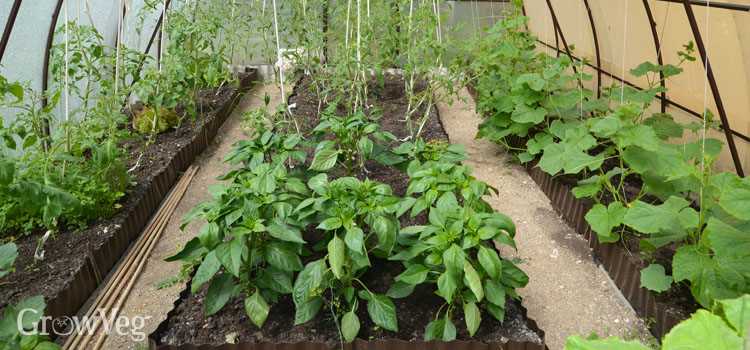
Over time, the soil in your greenhouse can become depleted of nutrients due to continuous cultivation. Fertilizing helps replenish these nutrients, improving soil fertility. Fertile soil provides a favorable environment for plants to grow, maximizing their productivity.
3. Improved Plant Health
Proper fertilization strengthens plant health and resistance to diseases and pests. When plants receive the necessary nutrients, they develop strong root systems, robust stems, and healthy foliage. This, in turn, helps plants better withstand adverse environmental conditions and attacks from pathogens.
4. Increased Yield
The primary goal of fertilizing your greenhouse is to increase crop yield. By providing plants with essential nutrients, you can promote vigorous growth and encourage the production of healthy fruits, vegetables, or flowers. A well-fertilized greenhouse translates into a bumper harvest.
5. Efficient Nutrient Absorption
Fertilizing your greenhouse plants at the right time and in the proper amounts ensures that they can efficiently absorb the nutrients provided. This leads to better nutrient utilization and minimizes the risk of nutrient waste. Effective nutrient absorption promotes optimal plant growth and development.
6. Tailored Nutrient Management
By fertilizing your greenhouse, you have control over the nutrient composition and can tailor it to suit the specific needs of your plants. Different crops require different nutrient ratios, and customizing your fertilizer mix allows you to provide the ideal combination for each crop, optimizing their growth and yield.
7. Environmental Sustainability
Proper fertilization practices in your greenhouse contribute to environmental sustainability. By supplying plants with the nutrients they need, you minimize the risk of excess fertilizer runoff and water contamination. This helps protect local ecosystems and promotes a greener approach to gardening.
Overall, understanding the importance of fertilizing your greenhouse is essential for successful gardening. By ensuring proper nutrient supply, you can promote healthy plant growth, prevent nutrient deficiencies, enhance soil fertility, and ultimately achieve higher crop yields. Don’t underestimate the power of proper fertilization in maximizing the potential of your greenhouse crops!
Choosing the Right Fertilizer for Your Plants
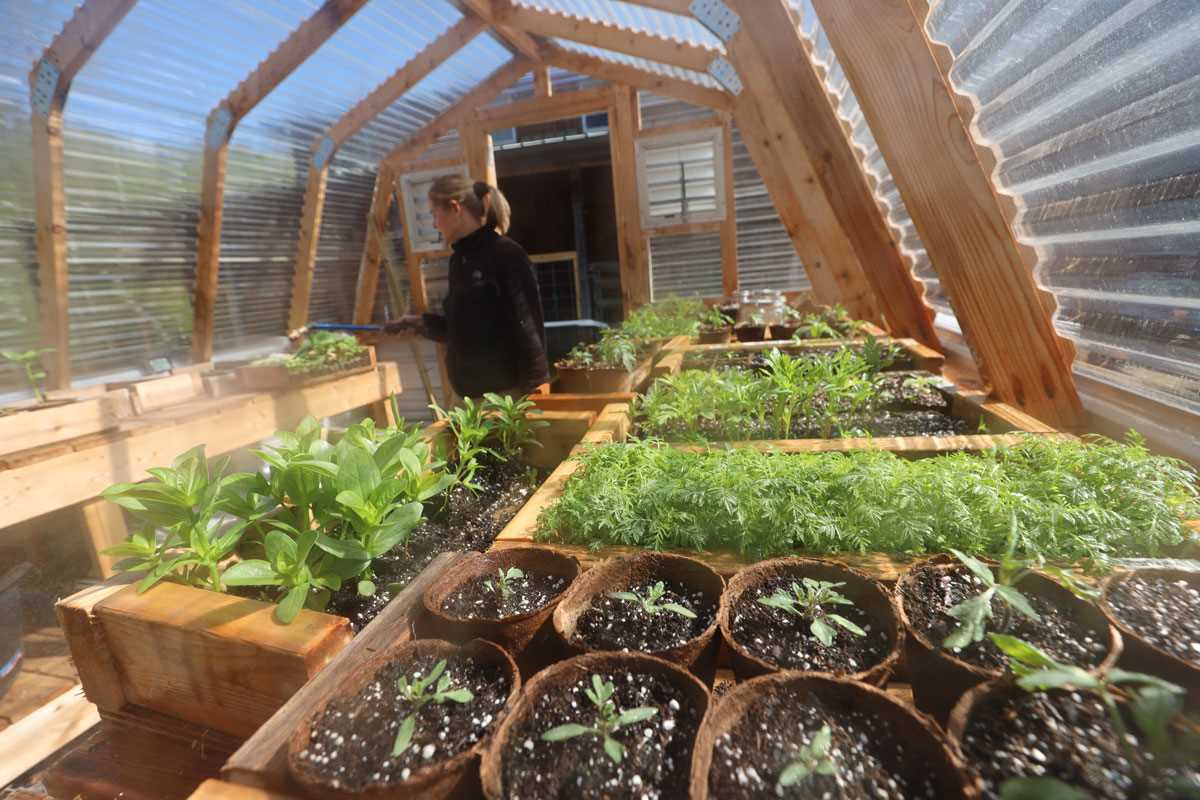
When it comes to fertilizing your greenhouse plants, choosing the right fertilizer is crucial for their growth and overall health. Different plants have different nutrient requirements, so it’s important to understand what your plants need before selecting a fertilizer.
Fertilizer Types
There are three main types of fertilizers commonly used in greenhouses:
- Organic Fertilizers: These fertilizers are derived from natural sources such as compost, manure, or plant materials. They provide a slow-release of nutrients and improve soil health over time. Organic fertilizers are environmentally friendly and are especially beneficial for organic gardening.
- Inorganic Fertilizers: Also known as synthetic or chemical fertilizers, these are manufactured using synthetic materials. Inorganic fertilizers provide a quick-release of nutrients, making them highly effective for fast-growing plants that require immediate nourishment. However, they can have negative impacts on the environment if used excessively.
- Controlled-Release Fertilizers: These fertilizers release nutrients over an extended period, providing a steady supply of nutrients to the plants. Controlled-release fertilizers are beneficial for greenhouse plants that require constant feeding but do not want to rely on frequent applications.
Matching Fertilizer to Plant Needs
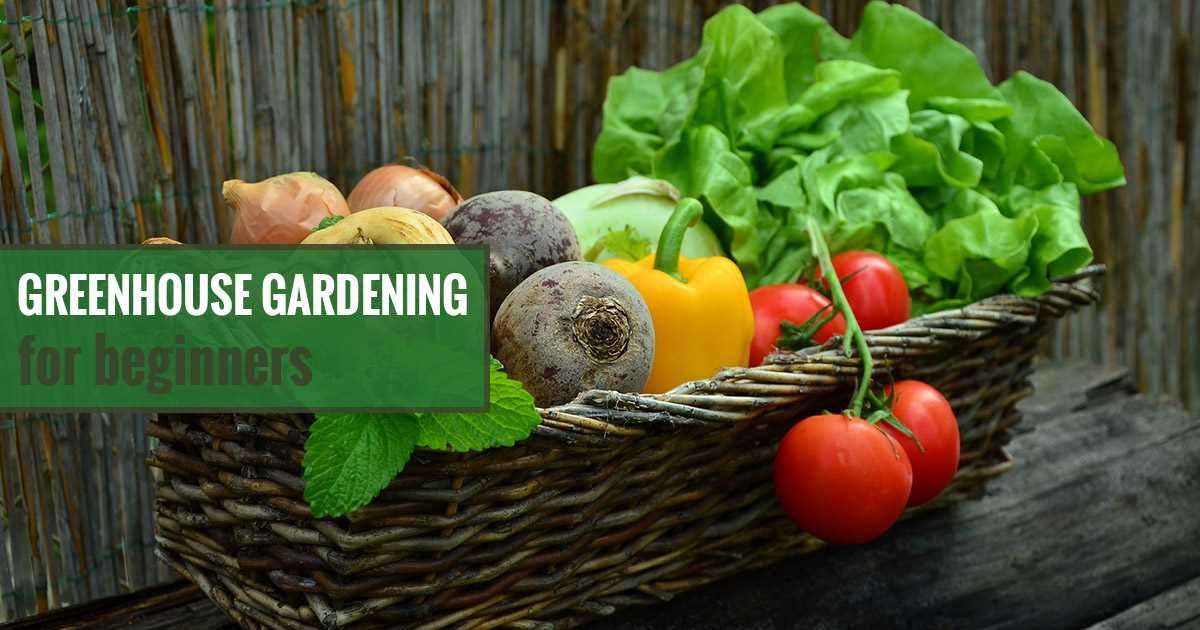
Before selecting a fertilizer, it’s important to assess the nutrient requirements of your plants. The three main macronutrients that plants need are nitrogen (N), phosphorus (P), and potassium (K), often expressed as N-P-K ratios on fertilizer packaging.
Nitrogen (N): Promotes leaf and stem growth. Plants that require high nitrogen levels include leafy greens, brassicas, and most annuals.
Phosphorus (P): Supports root development, flowering, and fruit production. Plants that benefit from higher phosphorus levels include fruiting vegetables, flowering plants, and bulbs.
Potassium (K): Aids in overall plant health and disease resistance. Plants that need higher potassium levels include various fruiting crops and crops susceptible to diseases.
Once you know the nutrient requirements of your plants, you can choose a fertilizer that matches their needs. Fertilizers will typically have ratios like 10-10-10, representing equal parts nitrogen, phosphorus, and potassium. However, some plants may require specific ratios, so it’s essential to read the labels and choose accordingly.
Fertilizer Application
When applying fertilizer in the greenhouse, it’s important to follow the manufacturer’s instructions for proper application rates and timing. Avoid over-fertilization, as this can lead to nutrient imbalances and potential damage to your plants.
A good practice is to conduct regular soil tests to monitor nutrient levels and adjust fertilization accordingly. This will help ensure that your plants are receiving adequate nutrients without excess or deficiency.
Conclusion
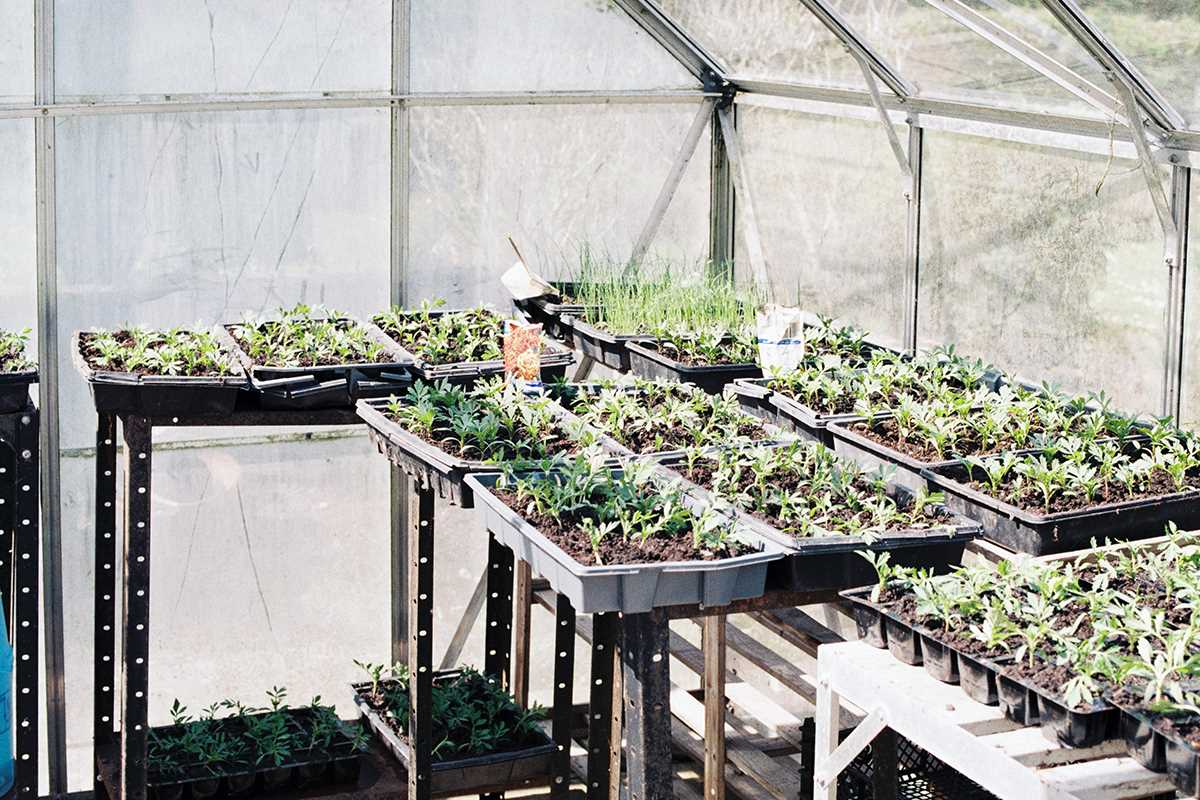
Choosing the right fertilizer for your greenhouse plants is crucial for their growth and productivity. Consider the nutrient requirements of your plants and select a fertilizer that matches their needs. Remember to follow the application instructions and monitor nutrient levels to maintain a healthy and thriving greenhouse garden.
Applying Fertilizer in the Correct Amounts
Properly fertilizing your greenhouse is essential for achieving maximum yield. Applying fertilizer in the correct amounts is crucial for ensuring healthy plant growth and preventing damage caused by over-fertilization.
Determining the Right Amount
The amount of fertilizer you need to apply will depend on several factors, including the type of plants you are growing, their growth stage, the nutrient requirements of the plants, and the soil conditions in your greenhouse. It is important to determine the appropriate amount of fertilizer by conducting soil tests and consulting with agricultural experts or horticulturists.
Using Fertilizer Calculators
Fertilizer calculators can be helpful tools in determining the correct amount of fertilizer to apply. These calculators take into account the nutrient requirements of your plants and the nutrient content of the fertilizer you are using. By entering these details, the calculator can provide you with the specific amount of fertilizer you need to apply per square foot or per acre.
Following Fertilizer Labels
When applying fertilizer, it is important to carefully read and follow the instructions on the fertilizer labels. Different fertilizers have different nutrient concentrations, and their application rates may vary. The labels will provide information on the recommended application rates, such as how many pounds or ounces of fertilizer to apply per area.
Applying Fertilizer Uniformly
To ensure that your greenhouse plants receive an even distribution of nutrients, it is important to apply the fertilizer uniformly. This can be achieved by using a spreader or hand applicator to evenly distribute the fertilizer across the soil surface. Avoid clumps or piles of fertilizer, as these can lead to uneven nutrient distribution and potential damage to the plants.
Monitoring and Adjusting
After applying the fertilizer, it is important to monitor the plants closely and regularly. Look for signs of nutrient deficiencies or excesses, such as yellowing leaves or stunted growth. If necessary, adjust the fertilizer application rates accordingly to meet the changing needs of your plants.
In conclusion, applying fertilizer in the correct amounts is crucial for achieving a bumper harvest in your greenhouse. Determining the right amount, using fertilizer calculators, following fertilizer labels, applying fertilizer uniformly, and monitoring the plants are all important steps in achieving optimal fertilization and maximum yield.
The Best Timing for Fertilizing Your Greenhouse
Fertilizing your greenhouse at the right time is essential for maximizing the yield of your crops. Timing your fertilization correctly can help promote healthy plant growth and prevent nutrient deficiencies or excesses. Here are some important considerations for determining the best timing for fertilizing your greenhouse:
1. Understand Your Crop’s Nutrient Needs
Each type of plant has different nutrient requirements, so it’s important to understand the specific needs of your crops. Some plants may require more nitrogen during the vegetative growth stage, while others may need additional phosphorus during flowering or fruiting. Consult reference books or seek advice from agricultural experts to determine the optimal nutrient requirements for your crops.
2. Soil Testing
Regular soil testing is crucial to understand the nutrient content and pH level of your greenhouse soil. A soil test will provide valuable information about the existing nutrient levels and any imbalances that need to be addressed. Based on the soil test results, you can develop a targeted fertilization plan to meet the specific needs of your crops.
3. Fertilizing prior to Planting
In some cases, it’s beneficial to apply fertilizer before planting your crops. Pre-plant fertilization can help provide a solid nutrient base for the plants to establish strong root systems and healthy growth. Incorporate the appropriate fertilizer into the soil based on the recommendations from your soil test results.
4. Side-Dressing during the Growing Season
During the growing season, it’s important to monitor your crops for any nutrient deficiencies. Side-dressing or top-dressing with fertilizer can help replenish nutrients that may have been depleted from the soil. Apply the fertilizer on the side of the plant or around the base, avoiding direct contact with the leaves to reduce the risk of leaf burn.
5. Regular Feeding Schedule
Developing a regular feeding schedule is crucial for maintaining consistent nutrient levels in your greenhouse. Depending on the needs of each crop, you may need to fertilize every 2 weeks, once a month, or as recommended by soil test results. Stick to a consistent schedule to ensure your plants receive the necessary nutrients throughout their growth stages.
6. Pay Attention to Plant Signals
Monitoring your plants closely is essential for identifying any nutrient deficiencies or imbalances. Look for signs such as yellowing leaves, stunted growth, or poor fruit set. These are indicators that your plants may need additional nutrients. Adjust your fertilization schedule accordingly to address any deficiencies and prevent further damage.
7. Consider Environmental Factors
Environmental factors such as temperature, humidity, and light intensity can affect nutrient uptake and plant growth. Adjust your fertilization schedule accordingly based on these factors. For example, during periods of high temperature, plants may require more frequent watering and nutrients to compensate for increased evaporation.
By understanding your crop’s nutrient requirements, regularly testing your soil, and monitoring your plants closely, you can determine the best timing for fertilizing your greenhouse. Following these guidelines will help ensure optimal nutrient availability for your plants and ultimately lead to a bumper harvest.
Properly Monitoring the Growth of Your Plants
Monitoring the growth of your plants is crucial to ensure they are developing well and to catch any potential issues early on. By regularly observing and measuring the growth of your plants, you can make informed decisions about their care and adjust your cultivation practices as necessary.
Visual Observation
One of the simplest ways to monitor the growth of your plants is through visual observation. Take the time to regularly walk through your greenhouse and carefully examine each plant. Look for any signs of nutrient deficiencies, pests, diseases, or other problems that may be affecting growth.
Pay attention to the overall appearance of the plants, including the color and texture of the leaves, as well as any stunted growth or wilting. Additionally, keep an eye out for any unusual spots, lesions, or discoloration on the foliage, which may indicate disease or pest issues.
Measuring Growth
Measuring the growth of your plants can provide valuable insights into their development. There are several key measurements you can take to track their progress:
- Height: Use a ruler or measuring tape to measure the height of the plants from the soil level to the top of the main stem or highest point.
- Leaf Area: Use a leaf area meter or a simple grid method to measure the surface area of the leaves. This can help you determine the overall vigor and photosynthetic capacity of the plants.
- Root Length: Carefully remove a plant from its pot and gently wash away the soil to expose the roots. Measure the length of the main root or the longest lateral root to assess root growth.
- Number of Leaves: Count the number of leaves on each plant to track leaf production and growth. This can be particularly useful for determining the plant’s stage of development.
Recording and Analysis
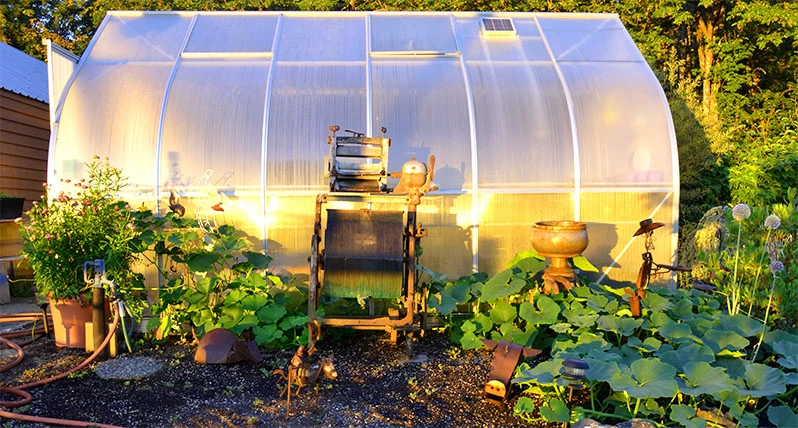
It is important to keep records of your observations and measurements to track the growth of your plants over time. Use a notebook or a spreadsheet to document the date, plant species, and the specific measurements taken.
By recording this information, you can create growth charts and analyze trends to identify any patterns or abnormalities. This analysis will help you make informed decisions about adjusting your cultivation practices, such as modifying fertilizer or irrigation regimes, or implementing pest control measures.
Conclusion
Properly monitoring the growth of your plants is essential for maximizing their yield and health. Through visual observation, regular measurement, and diligent record-keeping, you can identify and address any potential issues before they escalate, ultimately ensuring a successful and fruitful harvest in your greenhouse.
Preventing Nutrient Deficiencies with Fertilization
Proper fertilization is crucial for preventing nutrient deficiencies in your greenhouse crops. Nutrient deficiencies can have a significant impact on the quality and yield of your plants. By understanding the nutrient needs of your crops and providing them with the necessary fertilizers, you can ensure optimal growth and maximize your yield. Here are some key points to consider when it comes to preventing nutrient deficiencies with fertilization:
Choose the Right Fertilizer
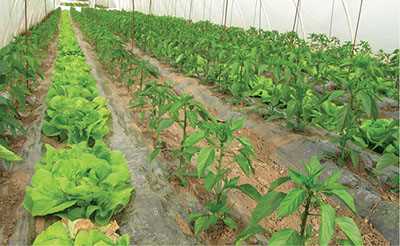
It’s essential to choose a fertilizer that provides the necessary nutrients for your crops. The three primary macronutrients required by plants are nitrogen (N), phosphorus (P), and potassium (K). However, plants also need secondary macronutrients such as calcium, magnesium, and sulfur, as well as various micronutrients like iron, manganese, zinc, and copper.
Properly identifying the nutrient deficiencies in your plants can help you select a fertilizer with the right balance of nutrients. Conduct regular soil tests and leaf analysis to determine which nutrients are lacking in your greenhouse. This information will guide you in selecting the appropriate fertilizer formulation.
Follow Fertilizer Application Recommendations
Each crop has specific fertilizer application recommendations based on its nutrient requirements. Following these recommendations is crucial for preventing nutrient deficiencies. Over-fertilizing can lead to nutrient imbalances and environmental pollution, while under-fertilizing can result in stunted growth and low yields.
Read the instructions on the fertilizer packaging to understand the recommended application rates and frequency. Consider factors such as plant age, growth stage, and environmental conditions while applying the fertilizer.
Implement Regular Fertilization Schedule
Consistency is key when it comes to fertilization. Implement a regular fertilization schedule to ensure a continuous supply of nutrients to your plants throughout their growth cycle. This helps prevent nutrient deficiencies and promotes healthy, vigorous growth.
Create a fertilizer calendar that outlines the specific fertilization requirements for each crop and the corresponding application dates. Stick to this schedule to prevent nutrient imbalances and deficiencies.
Maintain Proper pH Levels
The pH level of your greenhouse soil affects nutrient availability to plants. Most crops prefer slightly acidic to neutral soil pH (around 6.0-7.0). If the pH is too high or too low, certain nutrients may become unavailable to plants, leading to deficiencies.
Regularly monitor the pH level of your greenhouse soil and adjust it if necessary. Use pH testing kits or meters to determine the pH level and apply amendments like lime or sulfur to bring it within the optimal range.
Consider Fertigation
Fertigation, the application of fertilizers through irrigation systems, is an efficient way to provide nutrients to greenhouse crops. It allows for precise nutrient dosing and uniform distribution throughout the root zone. Fertigation also helps prevent excess runoff and leaching of nutrients.
Invest in a fertigation system that suits your greenhouse setup. Consult with experts to determine the appropriate fertigation ratio and schedule for your crops.
In conclusion, preventing nutrient deficiencies in your greenhouse crops requires careful consideration of fertilizer selection, application recommendations, regular fertilization schedules, pH maintenance, and fertigation. Paying attention to these factors will help ensure your plants receive the essential nutrients they need for healthy growth and maximum yield.
Common Mistakes to Avoid When Fertilizing Your Greenhouse
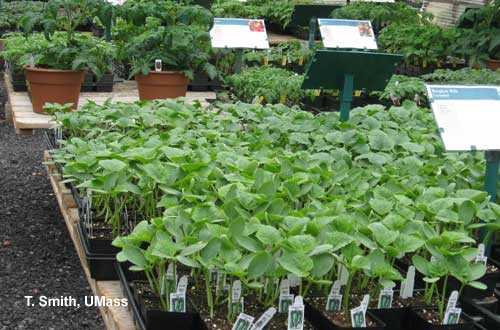
When it comes to fertilizing your greenhouse, there are some common mistakes that many growers make. These mistakes can lead to nutrient imbalances, poor plant growth, and reduced yields. To help you avoid these pitfalls, here are some common mistakes to watch out for:
1. Overfertilizing
One of the most common mistakes greenhouse growers make is overfertilizing their plants. While it might seem like more fertilizer means better growth, it can actually have the opposite effect. Overfertilizing can lead to nutrient burn, where the excess nutrients damage the plant’s roots and leaves. This can result in stunted growth and decreased yields.
To avoid overfertilizing, it’s important to carefully follow the instructions on the fertilizer packaging. Be sure to measure the correct amount of fertilizer and dilute it properly in water before applying it to your plants. Testing the soil regularly for nutrient levels can also help ensure you’re not overdoing it with fertilization.
2. Underfertilizing
While overfertilizing can be detrimental, underfertilizing can also hinder plant growth and yield. If your plants don’t receive enough nutrients, they may struggle to reach their full potential. This can result in smaller fruits, fewer flowers, and overall poor growth.
To avoid underfertilizing, it’s important to understand the specific nutrient requirements of your plants. Different crops have different nutrient needs, so be sure to research and provide the appropriate fertilization schedule. Regular soil testing can also help identify any nutrient deficiencies and allow you to adjust your fertilization program accordingly.
3. Ignoring pH Levels
The pH level of your greenhouse soil plays a significant role in nutrient availability. If the pH is too high or too low, certain nutrients may become unavailable to your plants. This can lead to nutrient deficiencies, even if you’re applying fertilizer regularly.
To avoid this mistake, it’s essential to regularly test your greenhouse soil pH. Adjusting the pH to the ideal range for your crops can help optimize nutrient uptake and ensure your plants receive the necessary nutrients for healthy growth.
4. Using the Wrong Type of Fertilizer
Not all fertilizers are created equal, and using the wrong type for your particular crops can hinder their growth. Different plants have different nutrient needs, and using a fertilizer that doesn’t provide the necessary nutrients can lead to deficiencies.
Before fertilizing your crops, research the specific nutrient requirements of each plant. Choose a fertilizer that provides the necessary nutrients in the appropriate ratio for optimal growth. It’s also worth considering organic fertilizers, which can help improve soil health and promote sustainable growing practices.
5. Poor Application Timing
The timing of fertilizer application is crucial for maximizing its effectiveness. Applying fertilizer too early or too late in the growing season can result in wasted nutrients or missed opportunities for plant growth.
It’s important to follow a fertilization schedule that aligns with your plants’ growth stages. This may include pre-plant fertilization, side dressing during the growing season, and additional applications as needed. Monitoring your plants’ growth and adjusting the timing of fertilizer applications accordingly can help ensure they receive the nutrients when they most need them.
Conclusion
Avoiding these common mistakes when fertilizing your greenhouse can help you achieve maximum yields and healthy plant growth. By carefully measuring and applying the right amount of fertilizer, monitoring soil pH levels, using the correct fertilizer for your crops, and timing your applications properly, you can ensure your plants receive the nutrients they need for optimal growth and productivity.
“Question-Answer”
What is the importance of fertilizing a greenhouse for maximum yield?
Fertilizing a greenhouse is important for maximum yield because it provides essential nutrients to the plants, helping them grow healthier and produce more fruits or vegetables.
What are the different types of fertilizers that can be used in a greenhouse?
There are several types of fertilizers that can be used in a greenhouse, including organic fertilizers, such as compost or manure, and synthetic fertilizers, such as NPK fertilizers.
How often should I fertilize my greenhouse plants?
The frequency of fertilizing greenhouse plants depends on the specific type of plants and their growth stage. In general, plants should be fertilized every one to two weeks during the active growing season.
What are the signs of nutrient deficiencies in greenhouse plants?
Signs of nutrient deficiencies in greenhouse plants can vary depending on the specific nutrient that is lacking. Common signs include yellowing or discoloration of leaves, stunted growth, and poor fruit or flower production.
Can over-fertilizing plants in a greenhouse be harmful?
Yes, over-fertilizing plants in a greenhouse can be harmful. It can lead to nutrient imbalances, soil toxicity, and even plant damage or death. It is important to follow the recommended dosage and application instructions when fertilizing greenhouse plants.







